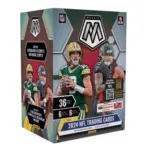This section compares his advanced stats with players at the same position. The bar represents the player’s percentile rank. The longer the bar, the better it is for the player.
The bars represents the team’s percentile rank (based on QB Rating Against). The longer the bar, the better their pass defense is. The team and position group ratings only include players that are currently on the roster and not on injured reserve. The list of players in the table only includes defenders with at least 3 attempts against them.
vs Broncos
Saturday, Dec 28th at 4:30PM
Overall QB Rating Against
66.8
Cornerbacks
55.3
Safeties
81.4
Linebackers
79.2
Burrow led the league in on-target percentage (76.7) for the second year in a row last season and finished second in completion percentage (68.3). Those marks were actually down a bit from the previous year, which is a bit surprising considering Burrow severely curtailed his downfield game. After throwing 20-plus yards on 12.5 percent of his attempts in 2021, Burrow went downfield only 7.5 percent of the time last season (30th). Instead, he went short, as his percentage of passes behind the line of scrimmage jumped to 19.6 percent. His counting stats, more or less, held steady, and he finished QB4 in fantasy with some help from five touchdown runs and 257 rushing yards. Burrow was still good at throwing deep — he tied Geno Smith with the highest on-target rate on 20-plus yard attempts at 60.0 percent — but his average target depth was just 7.5 yards (23rd). One apparent reason for the increase in dump-offs was a rebuilt offensive line that often did not live up to preseason hopes. However, the Bengals signed standout left tackle Orlando Brown this offseason, moving Jonah Williams to right tackle, which should help (provided Williams isn’t traded as he’s demanded). Burrow’s top three wide receivers return, led by Ja’marr Chase, while Irv Smith is replacing Hayden Hurst at tight end. Better efficiency can help Burrow stay in the top 5 of fantasy QBs even with some expected regression in his rushing TDs.
Burrow came back from a major knee injury that ended an impressive rookie year to lead the Bengals to the Super Bowl last season. But whereas in his first year Burrow put up numbers on the back of 40.4 pass attempts per game (a league-high through Week 11), he put up big numbers last season as perhaps the league’s most efficient passer. Averaging only 32.5 attempts per game (17th), Burrow led the league in on-target rate at 80.6 percent with an 8.1- yard average target depth (10th). That propelled him to a 70.4 completion percentage and 8.9 YPA – both tops in the league. Burrow capitalized on downfield throws, ranking fourth in on- target percentage (59.0), third in YPA (17.0) and first in touchdowns (11) on attempts of 20-plus yards, getting an instant boost from rookie receiver Ja’Marr Chase, with whom he teamed for a league-high six 50-yard completions and 22 20-yard completions (4th). Chase returns with Tyler Boyd and Tee Higgins, giving Burrow the league’s best WR trio. Joe Mixon gives the offense a returning 1,200-yard rusher, and after allowing 55 sacks (and an NFL-record 19 in the playoffs), the Bengals remade their offensive line in a big way by signing center Ted Karras, right guard Alex Cappa and right tackle La’el Collins. The only problem is that Burrow doesn’t run much, which could keep him from finishing as a top-5 fantasy QB even if he’s excellent for the Bengals again. He’s also set to miss a large portion of training camp while recovering from a late-July appendectomy, though it’s less of an issue given that the Bengals have continuity on offense everywhere besides the O-line.
Burrow was the favorite for rookie of the year last season before tearing the ACL and MCL in his left knee Week 11. He set team rookie records for completion percentage (65.3) and passing yards per game (268.8), grabbing the league’s attention by throwing for at least 300 yards in five of his first seven games. But it was largely built on volume (40.4 attempts per game led the league through 11 weeks), while downfield passing was a struggle. Of his 46 attempts of 20-plus yards, Burrow completed just nine, for a 19.2 completion percentage that ranked 34th of 35 QBs. His on-target percentage on deep throws ranked 30th (39.1), and his 6.4 YPA was 34th. Part of the problem was limited arm strength, but Burrow also had to rush throws as he was pressured on 28.3 percent of his downfield dropbacks. He was sacked 32 times, a 51-sack full-season pace. To mitigate the pass rush, the Bengals took advantage of his mobility by regularly rolling him out, and often relied on a quick passing game with intermediate routes. On attempts of 8-15 yards, his on-target percentage ranked 11th (70.0) and his completion percentage 10th (62.0). The Bengals upgraded their receiving group by reuniting Burrow with college teammate Ja’Marr Chase, the fifth overall pick in the draft. Chase will team with Tyler Boyd and Tee Higgins, giving Burrow three quality wideouts. And Joe Mixon, who was limited to six games last year, is healthy and provides a solid rushing attack. Burrow has a lot of room for growth, and with improved downfield passing could easily outperform his ADP.
Burrow had perhaps the greatest season by a quarterback in college football history last year. He led the nation in passing yards (5,671) and completion percentage (76.3) while throwing an FBS-record 60 TD passes, guiding LSU to the national championship and winning the Heisman Trophy along with pretty much every passing award. Making him the No. 1 pick in the draft was an easy choice for the Bengals. Also an easy choice was releasing long-time starting QB Andy Dalton one week later (and saving $17 million) to make Burrow the unquestioned starter. At 6-3, 221, Burrow has good size, and scouts rave about his leadership, competitiveness and football IQ. He doesn’t possess elite arm strength — it’s below average for an NFL starter — but he has tremendous vision, rapidly works through his progressions, has excellent touch and is consistently accurate. He has a skilled group of playmakers to help him acclimate in Cincinnati, with A.J. Green, Tyler Boyd and Joe Mixon returning and 6-3 wideout Tee Higgins drafted in the second round. The biggest concern is the offensive line. The Bengals were terrible up front last season, but the return of 2019 first-round pick LT Jonah Williams from an injury should help, as should the signing of RG Xavier Su’a-Filo. Fortunately, Burrow is plenty mobile, capable of extending plays with his legs and making throws on the move. If he plays 16 games as expected, the rookie should have enough passing volume (the Bengals threw 616 times last season, 6th most) that it won’t take much for him to be a top-10 fantasy QB with his rushing contributions.


